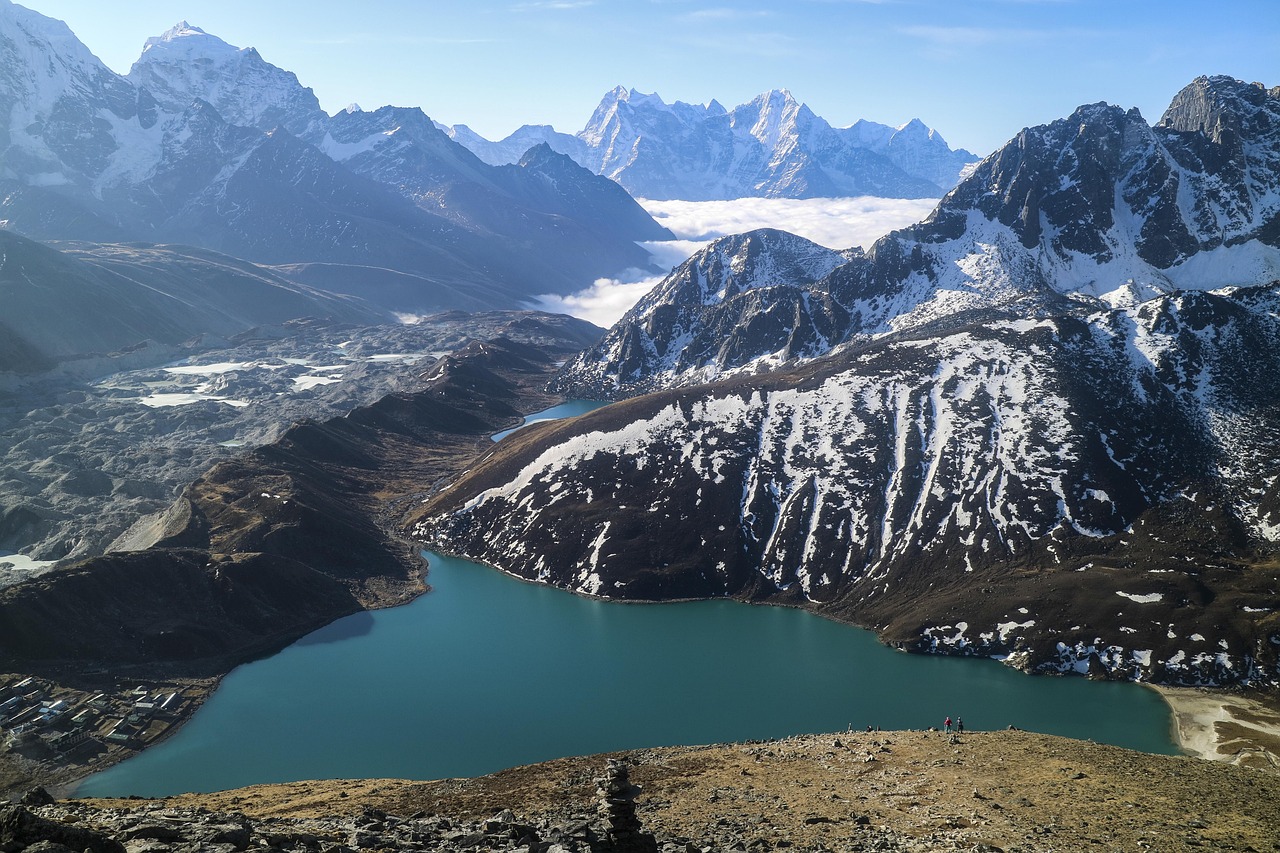Nepal Video
Retaining Productivity: Facing Common Challenges in Nepal
Nepal, a country known for its rich cultural heritage and breathtaking landscapes, faces several challenges when it comes to retaining productivity. From infrastructure limitations to political instability, these challenges can hinder the growth and development of businesses and individuals in Nepal. In this article, we will explore some of the common challenges faced by Nepal and discuss strategies to overcome them.
1. Limited Access to Basic Infrastructure
Nepal’s limited access to basic infrastructure, such as reliable electricity, transportation, and internet connectivity, poses a significant challenge to productivity. Without a stable power supply, businesses and individuals struggle to meet deadlines and maintain consistent performance. Additionally, inadequate transportation networks make it difficult to access markets and deliver products on time. The lack of reliable internet connectivity further hampers communication and access to global resources.
- Power cuts: Frequent power cuts disrupt work schedules and hinder productivity. Businesses often rely on backup generators or alternative power sources to mitigate the impact.
- Transportation challenges: Limited road networks and underdeveloped transportation systems make it challenging to transport goods efficiently. This leads to delays and increased costs for businesses.
- Poor internet connectivity: Unreliable internet connectivity restricts access to online resources, communication platforms, and global markets. Businesses and individuals struggle to stay connected and leverage digital tools effectively.
2. Political Instability
Nepal has experienced periods of political instability, with frequent changes in government and policy frameworks. This uncertainty creates a challenging environment for businesses, making it difficult to plan and invest for the long term. Political instability can also lead to protests, strikes, and disruptions in daily life, further impacting productivity.
- Inconsistent policies: Frequent changes in government and policies make it challenging for businesses to adapt and plan for the future. The lack of stability hinders long-term investments and growth.
- Protests and strikes: Political unrest often leads to protests and strikes, disrupting daily activities and hindering productivity. Businesses may have to temporarily shut down or face disruptions in operations.
- Uncertain business environment: The unpredictable political landscape creates an uncertain business environment, making it difficult for businesses to make informed decisions and investments.
3. Limited Access to Quality Education and Skills Development
Access to quality education and skills development opportunities is limited in many parts of Nepal. This lack of educational resources and training programs hinders the development of a skilled workforce, impacting productivity across various sectors.
- Limited educational institutions: Many rural areas in Nepal lack educational institutions, forcing students to travel long distances to access quality education. This limits their opportunities for skill development.
- Skills mismatch: The skills gap between the education system and industry requirements is a significant challenge. Graduates often lack the practical skills needed to excel in the job market.
- Low investment in vocational training: Limited investment in vocational training programs and apprenticeships further exacerbates the skills gap. This hampers productivity and restricts career opportunities.
4. Inadequate Healthcare Facilities
Nepal faces challenges in providing adequate healthcare facilities, especially in rural areas. Limited access to quality healthcare not only affects the well-being of individuals but also impacts productivity due to increased absenteeism and reduced work efficiency.
- Lack of healthcare infrastructure: Many rural areas have limited or no healthcare facilities, requiring individuals to travel long distances for medical care. This can result in delays in treatment and increased health risks.
- Healthcare affordability: High healthcare costs make it difficult for individuals to access quality medical services. This can lead to neglect of health issues and subsequent impacts on productivity.
- Health awareness: Limited health awareness and preventive measures contribute to higher incidences of illnesses and diseases. This affects productivity as individuals may experience frequent health issues.
5. Environmental Challenges
Nepal faces various environmental challenges, including natural disasters and climate change. These challenges can have severe impacts on productivity, particularly in sectors heavily reliant on agriculture and tourism.
- Natural disasters: Nepal is prone to earthquakes, floods, landslides, and other natural disasters. These events can cause significant damage to infrastructure, disrupt supply chains, and hinder productivity.
- Climate change: Changes in weather patterns and temperature can have adverse effects on agriculture and tourism, two crucial sectors for Nepal’s economy. Unpredictable weather conditions can lead to crop failures and affect tourist activities.
- Environmental degradation: Deforestation and unsustainable practices contribute to environmental degradation. This can lead to soil erosion, loss of biodiversity, and reduced productivity in sectors like agriculture.
6. Lack of Access to Finance and Credit
Access to finance and credit is limited in Nepal, particularly for small and medium-sized enterprises (SMEs) and individuals. This restricts investment opportunities, hampers business expansion, and limits productivity.
- Limited banking services: Many rural areas have limited access to banking services, making it difficult for individuals and businesses to save, borrow, or invest money.
- High interest rates: The high interest rates charged by financial institutions make it challenging for businesses to access credit. This limits their ability to invest in expansion and innovation.
- Lack of collateral: The requirement of collateral for loans poses a challenge for individuals and SMEs with limited assets. This restricts their access to finance and inhibits productivity.
7. Cultural and Social Norms
Cultural and social norms in Nepal can also impact productivity, particularly in terms of gender equality and social hierarchies. These norms may limit opportunities for certain groups and perpetuate inequalities in the workforce.
- Gender disparities: Traditional gender roles and stereotypes can limit opportunities for women in the workforce. This hampers productivity by restricting the utilization of the full potential of the population.
- Social hierarchies: Caste-based discrimination and social hierarchies can hinder equal opportunities and limit social mobility. This affects productivity by excluding certain groups from accessing resources and opportunities.
- Resistance to change: Cultural norms and resistance to change can impede innovation and adaptation to new technologies and practices. This can hinder productivity in various sectors.
Nepal Image 1:

8. Lack of Effective Government Policies
The lack of effective government policies and implementation mechanisms can hinder productivity in Nepal. Inconsistent regulations, bureaucratic hurdles, and corruption can create barriers for businesses and individuals.
- Inconsistent regulations: Inconsistent regulations and policies make it difficult for businesses to operate efficiently and plan for the future. This leads to uncertainty and impacts productivity.
- Bureaucratic hurdles: Lengthy bureaucratic processes and red tape can delay decision-making and hinder business operations. This affects productivity by slowing down processes and increasing costs.
- Corruption: Corruption within government institutions can hinder productivity by creating an unfair business environment and discouraging investment.
9. Lack of Entrepreneurial Support
The lack of adequate support for entrepreneurs and startups is another challenge faced by Nepal. Limited access to mentorship, funding, and business development resources can hinder the growth and success of new ventures.
- Limited funding opportunities: Access to funding for startups and entrepreneurs is limited in Nepal. This restricts their ability to scale their businesses and innovate.
- Lack of mentorship: The absence of experienced mentors and advisors hampers the growth of entrepreneurs. Mentorship programs can provide valuable guidance and support to navigate challenges and maximize productivity.
- Insufficient business development resources: Limited availability of resources such as incubation centers, business training programs, and networking opportunities restricts the growth potential of startups.
Nepal Image 2:

10. Lack of Effective Communication and Collaboration
Effective communication and collaboration are essential for productivity, but Nepal faces challenges in this regard. Language barriers, limited access to communication tools, and a hierarchical work culture can hinder effective collaboration.
- Language barriers: Nepal has a diverse linguistic landscape, and language barriers can hinder effective communication, particularly in multicultural work environments.
- Limited access to communication tools: Limited access to communication tools, such as high-speed internet and video conferencing platforms, can hinder remote collaboration and communication with global partners.
- Hierarchical work culture: A hierarchical work culture can discourage open communication and collaboration. This restricts the flow of ideas and feedback, limiting productivity and innovation.
11. Lack of Market Diversification
Nepal’s economy heavily relies on a few sectors, such as agriculture and tourism. The lack of market diversification poses a risk to productivity, as overreliance on specific industries can lead to vulnerability during crises.
- Agriculture dependency: Nepal’s economy heavily relies on agriculture, but climate change, natural disasters, and market fluctuations can disrupt productivity in this sector.
- Tourism vulnerabilities: While tourism is a significant contributor to Nepal’s economy, it is vulnerable to external factors such as political instability, natural disasters, and global health crises. This can impact productivity in the tourism sector.
- Need for sector diversification: Diversifying the economy and exploring new sectors can reduce reliance on specific industries and enhance overall productivity and resilience.
Nepal Image 3:

12. Lack of Employee Engagement and Work-Life Balance
Employee engagement and work-life balance play a crucial role in maintaining productivity. However, Nepal faces challenges in providing a conducive work environment that promotes employee well-being and engagement.
- Long working hours: Many industries in Nepal have long working hours, which can lead to burnout and reduced productivity in the long run.
- Limited work-life balance: The lack of flexible work arrangements and support for work-life balance can impact employee satisfaction and productivity.
- Employee motivation: Limited opportunities for career growth, recognition, and skill development can lead to decreased employee motivation and productivity.
Conclusion
Retaining productivity in Nepal is a multifaceted challenge that requires addressing various factors, including infrastructure limitations, political instability, limited access to quality education and healthcare, environmental challenges, and cultural norms. To overcome these challenges, it is crucial to invest in infrastructure development, create stable political environments, improve access to education and healthcare, promote sustainable practices, and foster an inclusive and supportive business environment. Additionally, addressing communication barriers, diversifying the market, and prioritizing employee well-being can contribute to enhancing productivity in Nepal.
References
- Government of Nepal: https://www.nepal.gov.np
- World Bank Nepal: https://www.worldbank.org/en/country/nepal
- Nepal Tourism Board: https://www.welcomenepal.com
- Nepal Institute for Policy Research: https://www.nipr.org.np
- Nepal Rastra Bank: https://www.nrb.org.np


